
Arches National Park is yet another reminder that our National Parks have been established for the preservation of unique and awesome beauty.

Arches National Park is yet another reminder that our National Parks have been established for the preservation of unique and awesome beauty.
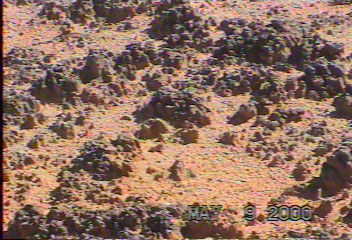 |
As you know from our other webpages and adventures, Mitch
and Max are involved in learning about America's National Parks.
Cheryl and I also learn a lot. This picture looks like rugged mountains
taken from an airplane at 10,000 feet.
Actually, these mountains are only one to two inches high. The soil here is covered by a micro bionic crust. It's a very thin layer of bacteria and algae that live on the surface of the sandy soil. This crust protects the area from severe erosion by acting like a sponge to hold water in. Most interesting is that it dies when walked on and then takes several years to reform. Signs were everywhere asking us to stay on the trails or hard rock surfaces. |
| This set of arches is located in a area called the Fiery
Furnace. The name of this formation is Skull Arch.
This arch is formed by a water buildup on the top that forms a pool of water. The water seeps through the rock, slowly making a hole though it. |
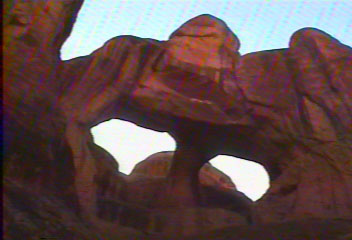 |
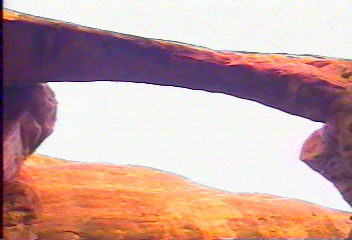 |
Here's another arch in the Fiery Furnace. It was
formed by weaker layers of rock that have fallen away under a harder layer
of rock.
The bright blue sky above provides too much light for my camera so it washes out the sky to be white. The contrast of colors here is spectacular. |
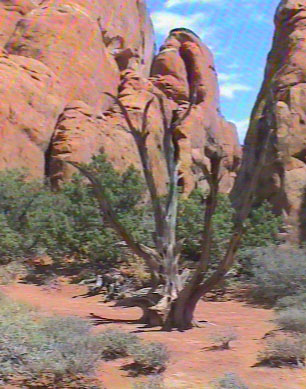 |
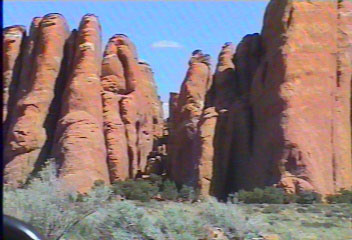 |
 |
This arch is called Sand Dune Arch. It is an an area where the boys and Ed love to climb; (yes, you can safely stand on the top of the arch). The ground here is red sand and the rocks are challenging to climb, yet require no special equipment. We were here four years ago and the kids enjoyed coming back to a familiar place. As seen by the entrance picture above, the rock walls are quite tall but as we journey back further and further we slowly work our way near the top. |
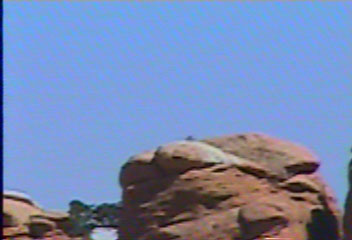 |
At one point the trail, (if you can call it that), we
end up between two rock walls and the passage is about one foot wide.
At the same time, the trail is traveling down at a 45 degree angle so it
is hard to bend one's knees in order to step up and down. It feels
like I could get stuck in there at any moment. Ed can push his stomach
against the rocks in this area and hang there without using his hands or
feet. Cheryl just assumes stay back and let the boys do their climbing.
Once we were on the top we positioned a dark colored rock so we could see it with binoculars from the bottom. Can you see the dark little bump on the top? |
| Can you imagine living here? This cabin was the
home of John Wesley Wolfe, a disabled Civil War veteran and his son, Fred.
They settled here in the late 1800's and worked the ranch for twenty years.
A weathered log cabin, root cellar and a corral remain as evidence of their
ranching days here.
I can't imagine living out here in the heat.
|
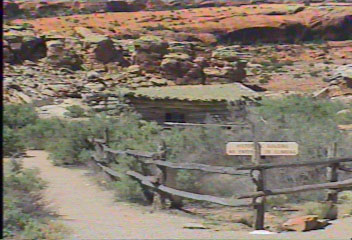 |
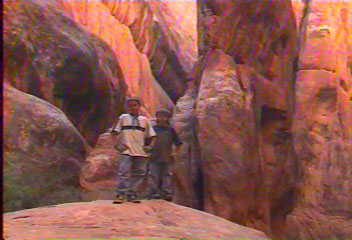 |
Here are four pictures of a guided hike through the Fiery Furnace. Like the tall narrow walls of Sand Dune, these walls were formed when the earth lifted, spreading out the rock like spreading the fingers on your hand. | 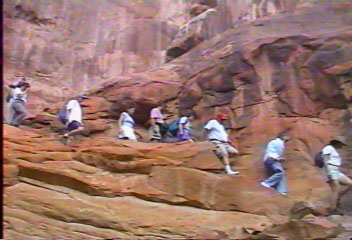 |
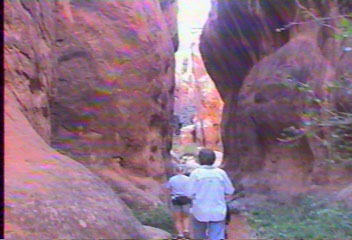 |
Salt layers were washed away by the rain leaving these tall walls with many narrow passage ways. It is a truly fascinating journey to walk through this area. | 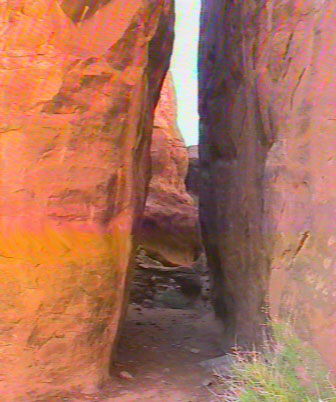 |
|
|
|
|
|
ã
copyright Nodland 1999-2020